Book a live interview

To book a live or taped interview with Marc Christensen in the SMU News Broadcast Studio call SMU News at 214-768-7650 or email news@smu.edu. |
A new $5.6 million center funded by the U.S. Department of Defense and industry is led by SMU’s Lyle School of Engineering to develop revolutionary technology for advanced prosthetic limbs that will help amputees returning from war in Iraq and Afghanistan.
Two-way fiber optic communication between prosthetic limbs and peripheral nerves will be key to operating realistic robotic arms, legs and hands that not only move like the real thing, but also “feel” sensations like pressure and heat.
Journalist David Hambling in New Scientist magazine reported on the technology and the research center in the Oct. 17 article “Robot limbs to plug into the brain with light.”
The center is led by Marc Christensen, chair of the Department of Electrical Engineering in SMU’s Bobby B. Lyle School of Engineering.
Related links

To book a live or taped interview with Marc Christensen in the SMU News Broadcast Studio call SMU News and Communications at 214-768-7650 or email news@smu.edu. |
Related links
|
The Dallas Observer on its Unfair Park blog took note of the SMU-led Neurophotonics Research Center being funded by the Department of Defense and industry with a $5.6 million grant.
In the Sept. 13 entry, Journalist Robert Wilonsky explained details of the project to Observer readers and quoted Marc Christensen, electrical engineering chair in SMU’s Lyle School of Engineering.
“Enhancing human performance with modern digital technologies is one of the great frontiers in engineering. Providing this kind of port to the nervous system will enable not only realistic prosthetic limbs, but also can be applied to treat spinal cord injuries and an array of neurological disorders,” Christensen is quoted.
EXCERPT:
By Robert Wilonsky
SMU and the Department of Defense are already partners on that paper-thin camera straight outta 1984 by way of Minority Report. Now the Hilltop sends word of its latest DOD partnership — a $5.6-mil Neurophotonics Research Center that’ll be run by Marc Christensen, electrical engineering chair in SMU’s Lyle School of Engineering. Its charge: to develop prosthetic limbs using fiber optics that actually feel things like pressure and temperature. Says SMU: “Lightning-fast connections between robotic limbs and the human brain may be within reach for injured soldiers and other amputees.”
DOD, industry fund $5.6 million SMU-led research center; Lyle School technology drives development of advanced prosthetics
Book a live interview

To book an inter- view with Marc Christensen in the SMU Broadcast Studio call 214-768-7650 or email news@smu.edu. |
| Read more SMU technology research |
Lightning-fast connections between robotic limbs and the human brain may be within reach for injured soldiers and other amputees with the establishment of a multimillion-dollar research center led by SMU engineers.
Funded by a Department of Defense initiative dedicated to audacious challenges and intense time schedules, the Neurophotonics Research Center will develop two-way fiber optic communication between prosthetic limbs and peripheral nerves.
This connection will be key to operating realistic robotic arms, legs and hands that not only move like the real thing, but also “feel” sensations like pressure and heat.
Successful completion of the fiber optic link will allow for sending signals seamlessly back and forth between the brain and artificial limbs, allowing amputees revolutionary freedom of movement and agility.
Potential to patch injured spinal cord
 |
 |
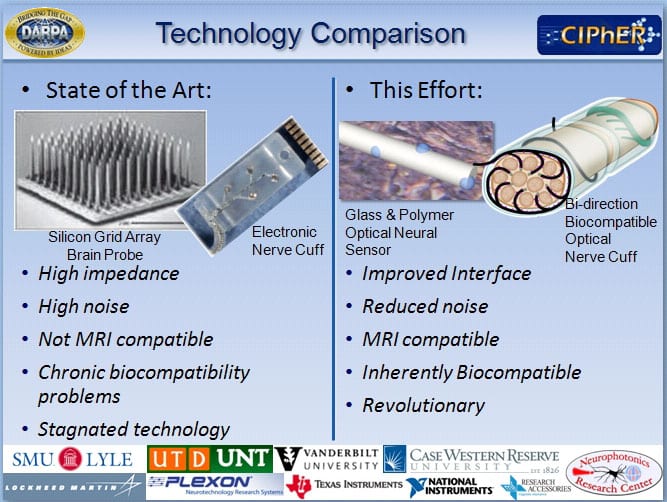 |
Partners in the Neurophotonics Research Center also envision man-to-machine applications that extend far beyond prosthetics, leading to medical breakthroughs like brain implants for the control of tremors, neuro-modulators for chronic pain management and implants for patients with spinal cord injuries.
The researchers believe their new technologies can ultimately provide the solution to the kind of injury that left actor Christopher Reeve paralyzed after a horse riding accident. “This technology has the potential to patch the spinal cord above and below a spinal injury,” said Marc Christensen, center director and electrical engineering chair in SMU’s Lyle School of Engineering. “Someday, we will get there.”
The Defense Advanced Research Projects Agency (DARPA) is funding the $5.6 million center with industry partners as part of its Centers in Integrated Photonics Engineering Research (CIPhER) project, which aims to dramatically improve the lives of the large numbers of military amputees returning from war in Iraq and Afghanistan.
Currently available prosthetic devices commonly rely on cables to connect them to other parts of the body for operation — for example, requiring an amputee to clench a healthy muscle in the chest to manipulate a prosthetic hand. The movement is typically deliberate, cumbersome, and far from lifelike.
A link compatible with living tissue
The goal of the Neurophotonics Research Center is to develop a link compatible with living tissue that will connect powerful computer technologies to the human nervous system through hundreds or even thousands of sensors embedded in a single fiber.
Unlike experimental electronic nerve interfaces made of metal, fiber optic technology would not be rejected or destroyed by the body’s immune system.
“Enhancing human performance with modern digital technologies is one of the great frontiers in engineering,” said Christensen. “Providing this kind of port to the nervous system will enable not only realistic prosthetic limbs, but also can be applied to treat spinal cord injuries and an array of neurological disorders.”
The center brings together researchers from SMU, Vanderbilt University, Case Western Reserve University, the University of Texas at Dallas and the University of North Texas.
The Neurophotonics Research Center’s industrial partners include Lockheed Martin (Aculight), Plexon, Texas Instruments, National Instruments and MRRA.
Integrated system at cellular level
Together, this group of university and industry researchers will develop and demonstrate new increasingly sophisticated two-way communication connections to the nervous system.
Related links
- Vanderbilt University: New initiative to develop a system that controls prosthetic limbs naturally
- Optics Express: Tuning of whispering gallery modes of spherical
resonators using an external electric field - Marc Christensen
- SMU Profile: Marc Christensen
- Volkan Otugen
- Micro-Sensor Laboratory
- SMU Department of Electrical Engineering
- SMU Department of Mechanical Engineering
- Bobby B. Lyle School of Engineering
More SMU Research news

Snail mail beats phones to help feds sustain ample fish stocks in U.S. coastal waters |

Africa’s cell phone boom can’t trump dire need for schools, roads, power, water |
Every movement or sensation a human being is capable of has a nerve signal at its root. “The reason we feel heat is because a nerve is stimulated, telling the brain there’s heat there,” Christensen said.
The center formed around a challenge from the industrial partners to build a fiber optic sensor scaled for individual nerve signals: “Team members have been developing the individual pieces of the solution over the past few years, but with this new federal funding we are able to push the technology forward into an integrated system that works at the cellular level,” Christensen said.
The research builds on partner universities’ recent advances in light stimulation of individual nerve cells and new, extraordinarily sensitive optical sensors being developed at SMU. Volkan Otugen, SMU site director for the center and Lyle School mechanical engineering chair, has pioneered research on tiny spherical devices that sense the smallest of signals utilizing a concept known as “whispering gallery modes.” A whispering gallery is an enclosed circular or elliptical area, like that found beneath an architectural dome, in which whispers can be heard clearly on the other side of the space.
Ultimate combination for two-way interface
The ultimate combination of advanced optical nerve stimulation and nerve-sensing technologies will create a complete, two-way interface that does not currently exist. “It will revolutionize the field of brain interfaces,” Christensen said.
“Science fiction writers have long imagined the day when the understanding and intuition of the human brain could be enhanced by the lightning speed of computing technologies,” said Geoffrey Orsak, dean of the SMU Lyle School of Engineering. “With this remarkable research initiative, we are truly beginning a journey into the future that will provide immeasurable benefits to humanity.”
A private university located in the heart of Dallas, SMU is building on the vision of its founders, who in 1911 imagined a distinguished center for learning emerging from the spirit of the city. Today, nearly 11,000 students benefit from the national opportunities and international reach afforded by the quality of SMU’s seven degree-granting schools. — Kimberly Cobb
SMU has an uplink facility located on campus for live TV, radio, or online interviews. To speak with Marc Christensen or to book a live or taped interview in the studio, call SMU News & Communications at 214-768-7650 or email news@smu.edu.
Research could change course of treatment for cancer that spreads to bones
- Post author By Margaret Allen
- Post date August 11, 2010
New research holds promise for the thousands of people whose cancer has spread to their bones.
A common treatment for such patients is radiation surgery — even though very little is known about radiosurgery’s impact on bone strength, says Edmond Richer, associate professor of engineering at Southern Methodist University in Dallas.
Researchers now hope to conclusively establish the effects of radiation on human bone under a $596,000 grant from the National Institutes of Health. The 15-month grant will look at cervical fractures that sometimes occur six to eight months after stereotactic radiosurgery, called SRS, in patients with vertebral metastases.
SMU and UT Southwestern partnership
The researchers include Richer, the Robert C. Womack Endowed Chair of mechanical engineering and founder of the Biomedical Instrumentation and Robotics Laboratory in SMU’s Bobby B. Lyle School of Engineering, and Paul Medin, John Anderson and Joseph Zerwekh, professors at UT Southwestern Medical Center at Dallas.
Related links
More SMU Research news
The grant from NIH’s Neurological Disorders and Stroke Institute could transform treatment for patients with cancer metastases in the bone, as well as for millions with other bone diseases, such as osteoporosis, Richer says. According to the American Osteoporosis Foundation, an estimated 10 million Americans have the disease and 34 million more are at risk of developing it.
High fracture rate post-radiosurgery
Vertebral metastases occur in approximately 100,000 cancer patients annually, most of whom have major lung, breast, prostate, renal and myeloma malignancies, Richer says. SRS, considered a noninvasive procedure for treating spinal tumors, requires highly sophisticated instruments that deliver a precise amount of radiation to the targeted lesion.
A fracture rate of up to 39 percent has been reported in post-radiosurgery patients who receive high doses of radiation. The potentially devastating consequences of fractures include disabling pain, limited mobility and incontinence, Richer says.
“It’s a growing concern for radiology oncologists because there’s not much that can be done medically to reverse those problems,” he says, noting that advances in SRS technology outpace the research on its complex effects on bone.
“We began looking at the history of radiosurgery, and as algorithms and instruments have become more refined in the computation of doses and the delivery of radiation, the number of required treatments has decreased to a single procedure,” he says. “The issue of what happens to bone strength when the treatment goes from six lower-grade doses, each a month apart, to a single high-grade dose is an area practically void of research over the past 30 years.”
Gauging mechanical strength of bone
Richer’s focus for the project is on gauging the mechanical strength of bone and how it is affected. Assisting him is Julie Pollard, an SMU engineering graduate student, and Jessica Steinmann-Hermsen, a senior majoring in mechanical engineering and math.
“We’re looking at nondestructive modalities to determine bone strength,” specifically ultrasound technology, says Richer. While a bone mineral density test provides an accurate picture of calcium and other minerals in a segment of bone, it doesn’t measure the actual strength of the bone, he says.
Builds on earlier ultrasound instrument research
The project builds on Richer’s previous research to develop an ultrasound instrument that determines the elasticity of human bone. The instrument is under review by the U.S. Food and Drug Administration.
An abstract of the research by Richer and his collaborators has been accepted by the Acoustical Society of America, an international scientific society for sound-related fields, including biomedical ultrasound, for presentation at its biannual meeting in November. “Reduction of Ultrasound Propagation Velocity in Porcine Vertebrae Following Stereotactic Radiosurgery” was also selected for oral presentation at the meeting.
Richer supports interdisciplinary collaboration on research in medical robotics and advanced imaging techniques.
“Successful research is the result of free communication and thinking,” he says. “When engineers and physicians come together to discuss seemingly crazy ideas, frequently it turns out they’re not. And bringing them to fruition can help people in ways that neither the engineers nor the physicians imagined by themselves.” — Patricia Ward
DOD funds tiny cave camera, iris recognition technology for military, homeland security
- Post author By Margaret Allen
- Post date March 17, 2010
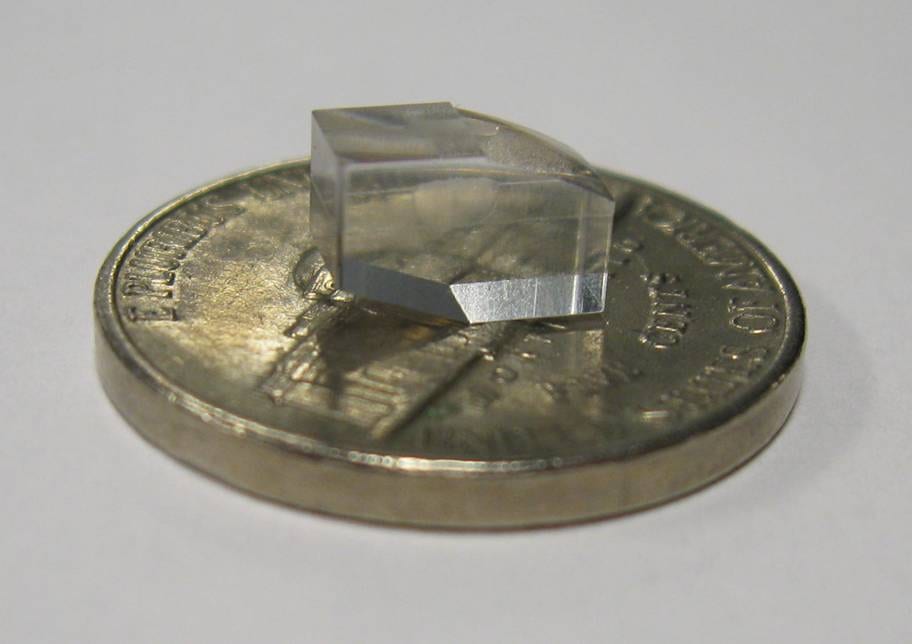 Researchers are expanding new miniature camera technology for military and security uses so soldiers can track combatants in dark caves or urban alleys, and security officials can unobtrusively identify a subject from an iris scan.
Researchers are expanding new miniature camera technology for military and security uses so soldiers can track combatants in dark caves or urban alleys, and security officials can unobtrusively identify a subject from an iris scan.
The two new surveillance applications both build on “Panoptes,” a platform technology developed under a project led by Marc Christensen at Southern Methodist University in Dallas and funded by the Department of Defense.
Panoptes is a compact, lightweight, high-resolution smart camera that is named for the Greek mythological character Argos Panoptes, the giant sentry with a hundred eyes.
DOD is funding development of the technology’s first two extension applications with a $1.6 million grant to SMU.
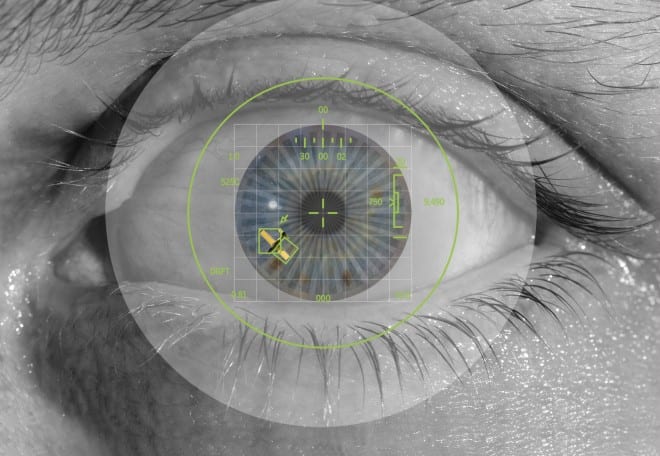 |
| Wired: DARPA’s Beady-Eyed Camera Spots the ‘Non-Cooperative’ |
Both the tiny cave camera and the iris recognition application will aid the military, border patrol, intelligence officials and airport security, according to Christensen and Delores Etter, a leading researcher in biometric identification.
Both are electrical engineers in SMU’s Bobby B. Lyle School of Engineering. The new applications may be ready for fielded demonstrations as soon as late 2011, said Christensen.
The Panoptes imaging system has been field-tested in tactical environment simulations by defense contractor Northrop Grumman and is currently in an independent test with Draper Laboratory.
“The Panoptes technology is sufficiently mature that it can now leave our lab, and we’re finding lots of applications for it,” said Christensen, an expert in computational imaging and optical interconnections. “This new money will allow us to explore Panoptes’ use for non-cooperative iris recognition systems for Homeland Security and other defense applications. And it will allow us to enhance the camera system to make it capable of active illumination so it can travel into dark places — like caves and urban areas.”
The new grant brings total DOD funding of Panoptes — short for “Processing Arrays of Nyquist-limited Observations to Produce a Thin Electro-optic Sensor” — to $5.5 million. The new applications have been dubbed AIM-CAMS, for “Active Illumination with Micro-mirror-arrays for Computational Adaptive Multi-resolution Sensing,” and Smart-Iris, for “SMU’s Multi-resolution Adaptive Roving Task-specific Iris Recognition Imaging System.”
Hi-rez “eyes” in caves, urban alleys
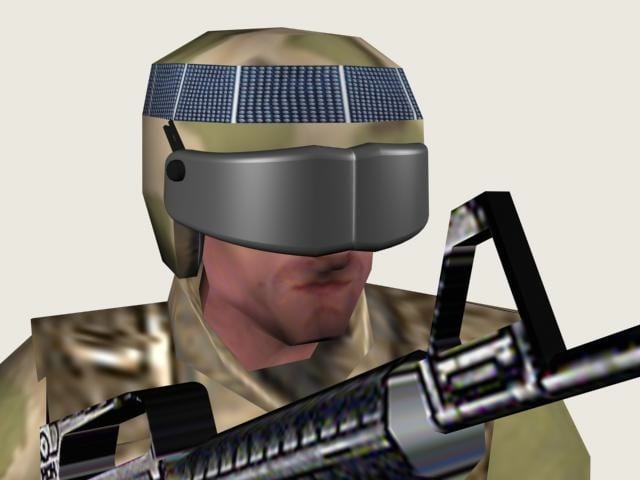 Panoptes initially was designed for military aerial drones and combat helmet cameras for use in daylight environments. The technology produces sharp, clear images without the size and weight of a conventional camera system because it doesn’t rely on a large, bulky, curved lens for high-resolution images.
Panoptes initially was designed for military aerial drones and combat helmet cameras for use in daylight environments. The technology produces sharp, clear images without the size and weight of a conventional camera system because it doesn’t rely on a large, bulky, curved lens for high-resolution images.
Instead, arrays of agile and precisely controlled microelectromechanical system (MEMS) mirrors are integrated with low-resolution sub-imagers on a silicon base for the purpose of sampling a wide field of view. The analog steerable MEMS mirrors adaptively redirect plexiglas sub-imagers to zoom in on regions of interest. The captured images are stored in an onboard computer and restored to high-resolution by an information theory-based super-resolution algorithm.
The sub-imagers are tiny off-axis-shaped paraboloids, fabricated using injection molding. At 8 millimeters by 5.7 millimeters by 4 millimeters, the sub-imagers have an effective focal length of 4 millimeters and are tiny enough to fit on the surface of a small coin.
The honeycomb-shaped micro mirror array comprises 61 hexagonal mirrors, each with three actuators to mechanically move and control the mirrors. The usable circular aperture, the opening through which light travels, is 3.9 millimeters in diameter. The end result — a digitally restored image — while not super-resolution, approaches optical limit, the researchers say.
The flat sub-imagers can be tiled unobtrusively almost anywhere, from the underside of a small drone to the outside of a soldier’s helmet to the walls of a hallway.
The Panoptes architecture is unique in its ability to adapt its field of view to steer to a region of interest, capturing only images of value, Christensen said. That preserves computing power by eliminating uniform allocation of imaging resources, which is wasteful, he said.
Smart-Iris narrows from wide field-of-view to narrow field-of-view
To develop the biometric Smart-Iris, the adaptive resolution of Panoptes will be paired with iris recognition technology.
“It’s very challenging to get the resolution with a wide field-of-view camera, but with a zoom camera, it’s hard to find the iris because it’s like looking through a soda straw,” Christensen said.
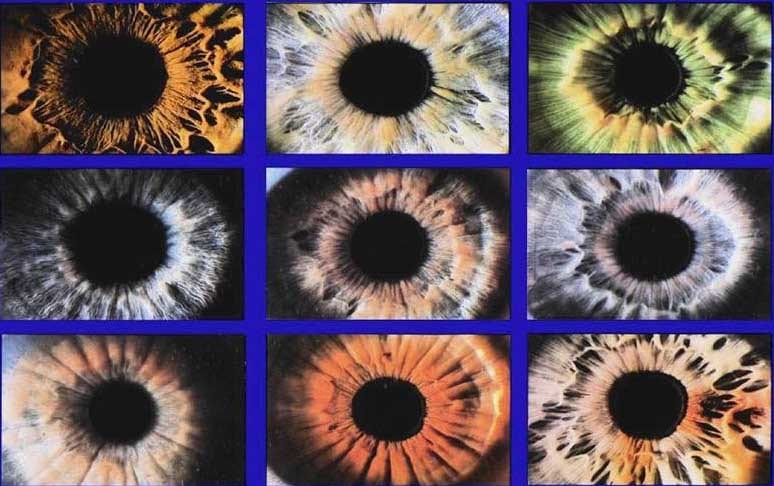 |
| Every iris is unique |
Iris recognition — currently used worldwide by airports, prisons, laboratories, fitness clubs, hotels and other institutions — is the most accurate biometric available because no two irises are alike, said Etter, a former Deputy Under Secretary of Defense who leads SMU’s Biometrics Engineering Research Group. The technology is challenged, however, by interference when the iris is being scanned, she said. Problems can include glare, eyelashes, eyelids or dim lighting.
With Panoptes, the camera can start with a wide field-of-view at low resolution, find a face, then narrow to the area of interest — the iris. At the same time, Smart-Iris will extend the range of iris acquisition. Instead of one person cooperatively standing motionless with their eye pressed to a scanner, Smart-Iris will make it possible for people to pass through a standard doorway, each one getting their iris scanned — without so much as even pausing — by equipment mounted on walls or door frames. At the same time, the camera would maintain high resolution and more than 150 pixels across the iris.
Easier Smart-Iris scan is unobtrusive, but accurate
That could benefit the Department of Homeland Security. More than 600 million people pass through security to fly aboard commercial airlines each year, according to the agency. Homeland Security relies on the latest technology to monitor more than 700 security checkpoints and 7,000 baggage screening areas.
“Our goal is to develop an iris recognition system that is unobtrusive and accurate. We want to ensure that the right people have access, and that potential intruders are identified, all without impacting flow in high-traffic areas,” said Etter, who directs the Lyle School’s Caruth Institute for Engineering Education.
Into caves and dark alleys
To develop AIM-CAMS, Panoptes is being paired with new off-the-shelf pocket projector technology known as Pico. Pico projectors, often compared in size to a candy bar, make it possible to project digital pictures taken by cell phones and other portable devices onto any wall for large-format viewing.
Combining Pico with Panoptes will allow the low-resolution camera to be used in dark places, such as caves and urban alleys, providing troops with situational awareness, said Christensen, who is chair of the SMU Department of Electrical Engineering and an associate professor.
SMU is collaborating on the research with Santa Clara University in California, Northrop Grumman and Draper Laboratory. Funding came from the Defense Advanced Research Projects Agency, Office of Naval Research and Army Research Laboratory.
Watch a news video about the Panoptes research
Related links:
DOD adds $2 million to SMU’s camera research
Marc Christensen
SMU Profile: Marc Christensen
Conference paper on Panoptes
Department of Electrical Engineering
Bobby B. Lyle School of Engineering







